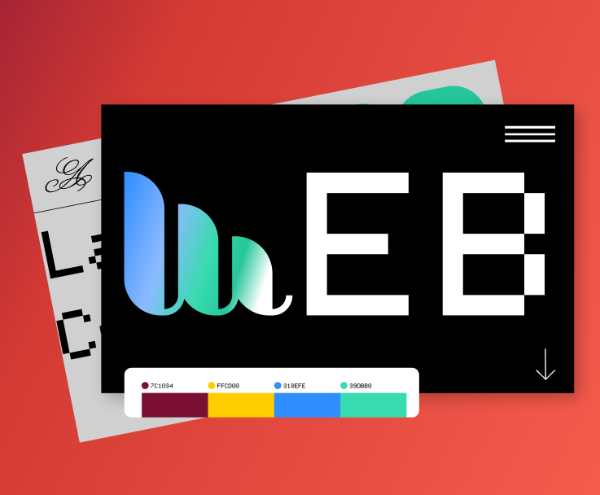Lead Generation Website for Underarm Whitening Tips and Tricks
How Lead Generation Website for Underarm Whitening Works
Lead Generation Website for Underarm Whitening
In today’s digital age, having a strong online presence is crucial for the success of any small business. With the majority of consumers turning to the internet to research products and services, having a website is no longer just an option – it’s a necessity. However, many small business owners may feel overwhelmed at the prospect of creating a website, especially if they lack technical skills or the budget to hire a professional web designer. That’s where website builders for small business come in.

Lead Generation Website for Underarm Whitening Challenges
Lead Generation Website for Underarm Whitening
A web designer’s primary goal is to create a visually appealing website that engages users and encourages them to explore further. This involves using a combination of technical skills and creativity to design a layout that is both aesthetically pleasing and easy to navigate. Web designers must also have a good understanding of user experience (UX) design principles to ensure that the website is intuitive and user-friendly.
In addition to creating the overall design of a website, web designers are also responsible for implementing various features and functionalities. This includes integrating multimedia elements such as images, videos, and animations, as well as creating interactive elements like buttons, forms, and drop-down menus. Web designers may also be responsible for optimizing the website for search engines (SEO) to help improve its visibility and ranking in search results.
To be successful as a web designer, one must possess a strong foundation in graphic design principles, as well as a good understanding of web development technologies such as HTML, CSS, and JavaScript. These skills are essential for creating visually appealing and responsive websites that work seamlessly across different devices and browsers.
Web designers often work closely with clients or project managers to understand their requirements and objectives for the website. This involves conducting research, brainstorming ideas, and creating mock-ups or wireframes to present to the client for review and feedback. Once the design is approved, web designers then proceed to code and develop the website using various programming languages and tools.
There are many different types of web designers, each with their own area of expertise. For example, graphic designers specialize in creating visual elements such as logos, icons, and illustrations, while user interface (UI) designers focus on designing the layout and overall look and feel of a website. User experience (UX) designers, on the other hand, are more concerned with how users interact with the website and how to improve their overall experience.
The role of a web designer can vary depending on the size and scope of the project. For small businesses or individuals looking to create a simple website, a web designer may be responsible for all aspects of the design and development process. However, for larger, more complex projects, web designers may work as part of a team alongside web developers, content creators, and digital marketers to bring the website to life.
In addition to technical skills, successful web designers also possess strong communication and problem-solving abilities. They must be able to effectively communicate their ideas and collaborate with others to bring a project to completion. Web designers must also be able to adapt to changes and solve problems quickly and efficiently, as technology and design trends are constantly evolving.
No code web builders, also known as visual development platforms, are designed to simplify the website creation process by eliminating the need for coding. Instead of writing complex HTML, CSS, and JavaScript code, users can simply drag and drop pre-designed elements, such as text, images, buttons, and forms, onto a canvas to create their desired layout. This intuitive interface makes it easy for users to visualize their website structure and design in real-time, making it ideal for those who are not familiar with coding languages.
One of the key advantages of using a no code web builder is the time and cost savings it offers. Traditional web development projects can be time-consuming and expensive, as they often require hiring a professional web developer or designer to code the website from scratch. With a no code web builder, individuals and businesses can create a website in a fraction of the time and at a fraction of the cost. This makes it an ideal solution for small businesses, startups, and individuals who are looking to establish an online presence quickly and affordably.
Another major benefit of using a no code web builder is the flexibility and customization it offers. With a wide range of pre-designed templates, themes, and modules to choose from, users can easily create a unique and personalized website that reflects their brand identity and vision. Additionally, most no code web builders come equipped with advanced features, such as e-commerce integration, SEO optimization, and mobile responsiveness, allowing users to create a professional-looking website that meets their specific needs and goals.
Furthermore, no code web builders are designed to be user-friendly and accessible to individuals of all skill levels. Whether you are a complete beginner or an experienced web developer, you can easily navigate the platform and create a website that meets your requirements. Most no code web builders come with step-by-step tutorials, customer support, and community forums to assist users in building their websites effectively. This level of support and guidance ensures that users can create a high-quality website without feeling overwhelmed or intimidated by the process.
In addition to their ease of use and cost-effectiveness, no code web builders are also beneficial for maintaining and updating websites in the long run. Traditional websites built with custom code often require ongoing maintenance, updates, and bug fixes, which can be time-consuming and expensive. No code web builders simplify the maintenance process by providing users with intuitive tools for editing, updating, and adding new content to their websites. This eliminates the need for ongoing support from a professional developer, allowing users to manage and maintain their websites independently.
As the demand for easy-to-use website building tools continues to grow, the market for no code web builders has expanded rapidly in recent years. A wide range of platforms, such as Wix, Squarespace, Weebly, and WordPress, offer no code web building solutions that cater to different industries, business sizes, and budgets. Whether you are a small business owner looking to create a simple brochure website or an e-commerce entrepreneur in need of a robust online store, there is a no code web builder available to meet your needs.

Lead Generation Website for Underarm Whitening Trends
Lead Generation Website for Underarm Whitening
In today’s digital age, having a visually appealing and user-friendly website is crucial for the success of any business. A well-designed website can help attract new customers, build credibility, and increase conversion rates. However, designing a website is not as simple as it may seem. It requires a strategic and systematic approach to ensure that the final product meets the needs and expectations of both the business and its target audience. In this article, we will discuss the website design process in detail, outlining the key steps involved in creating a successful website.
Step 1: Define the Purpose and Goals
The first step in the website design process is to clearly define the purpose and goals of the website. This involves identifying the target audience, understanding their needs and preferences, and determining the desired outcomes for the website. For example, is the website meant to generate leads, drive sales, provide information, or showcase products and services? By having a clear understanding of the purpose and goals of the website, you can better tailor the design and content to meet these objectives.
Step 2: Conduct Research
Once the purpose and goals of the website have been defined, the next step is to conduct research. This involves analyzing the competition, researching industry trends, and gathering insights into the preferences and behaviors of the target audience. By conducting thorough research, you can gain a better understanding of what works and what doesn’t in your industry, helping you make informed design decisions.
Step 3: Create a Wireframe
After conducting research, the next step in the website design process is to create a wireframe. A wireframe is a visual representation of the layout and structure of the website, showing the placement of various elements such as navigation menus, headers, footers, and content sections. Creating a wireframe allows you to plan the overall design and functionality of the website before moving on to the visual design phase.
Step 4: Design the Visual Elements
Once the wireframe has been finalized, the next step is to design the visual elements of the website. This involves creating a visually appealing and consistent design that reflects the brand identity and resonates with the target audience. Elements such as color scheme, typography, imagery, and layout are carefully considered to create a cohesive and attractive design that conveys the desired message and engages users.
Step 5: Develop the Website
After the visual design has been approved, the next step is to develop the website. This involves coding the design into a functioning website using HTML, CSS, and other programming languages. During the development phase, the website is tested for functionality, responsiveness, and compatibility across different devices and browsers to ensure a seamless user experience.
Step 6: Test and Optimize
Once the website has been developed, it is essential to test and optimize its performance. This involves conducting usability tests to identify any usability issues, testing load times to ensure fast page speeds, and optimizing the website for search engines to improve visibility and accessibility. By testing and optimizing the website, you can ensure that it meets the needs and expectations of users, leading to better engagement and conversions.
Step 7: Launch and Monitor
The final step in the website design process is to launch the website and monitor its performance. This involves deploying the website to a live server, promoting it to the target audience, and tracking key metrics such as traffic, engagement, and conversions. By monitoring the performance of the website, you can identify areas for improvement and make informed decisions to optimize its effectiveness over time.


